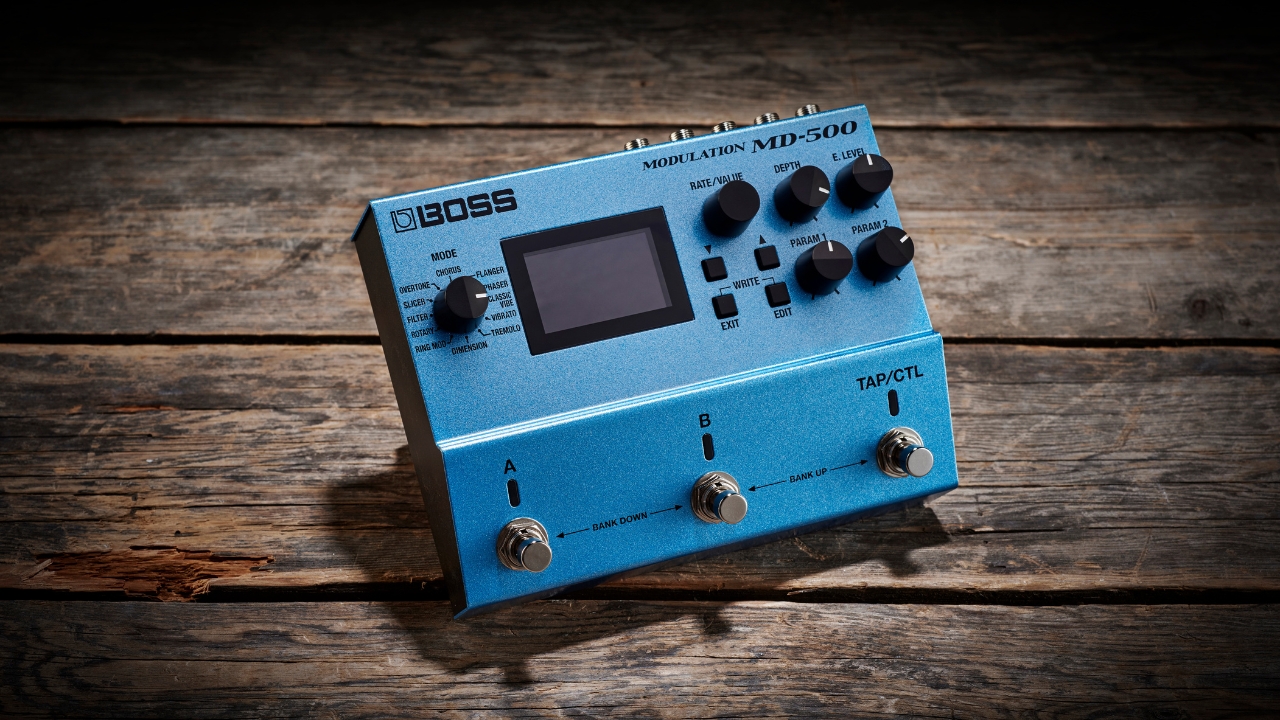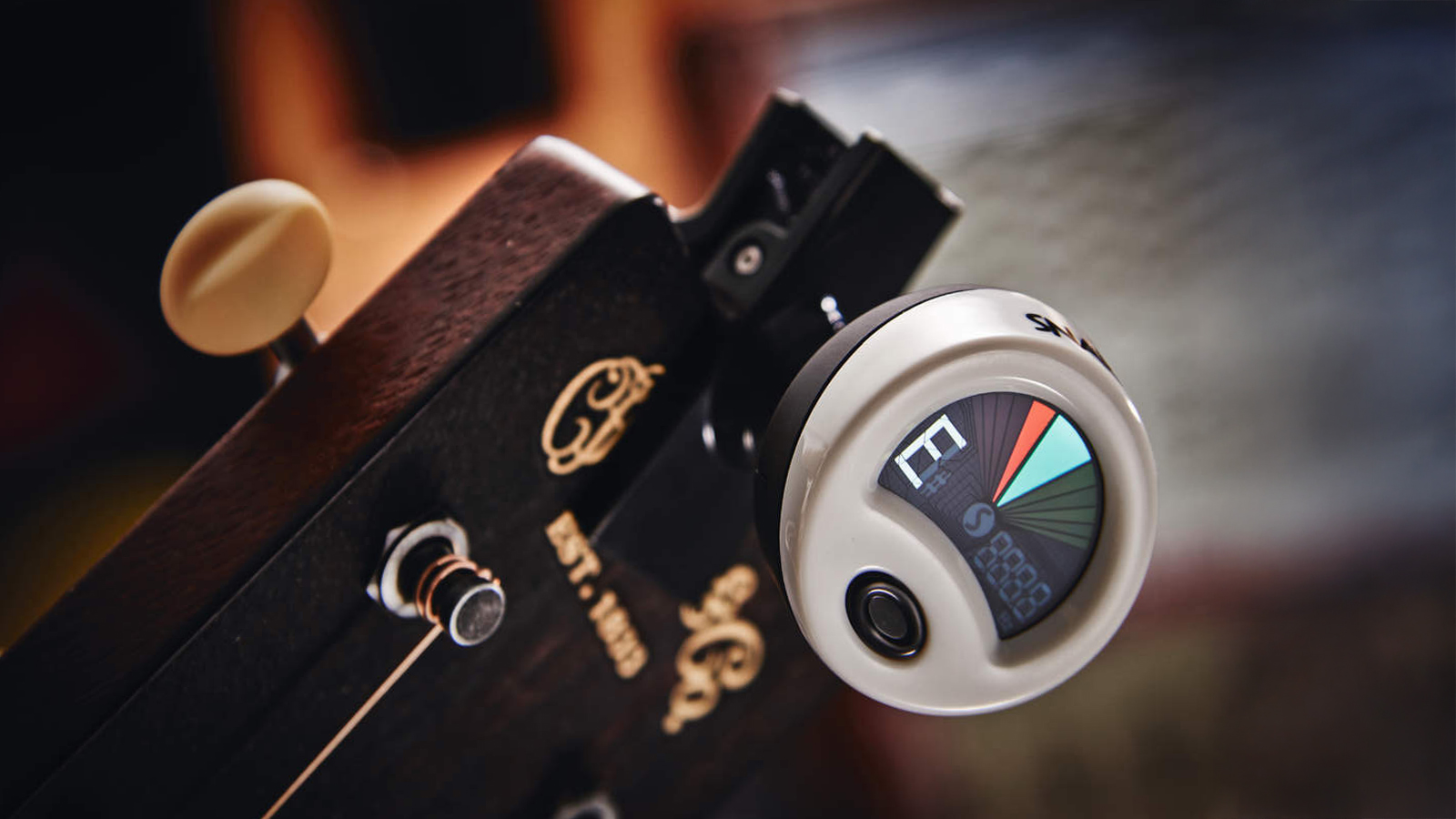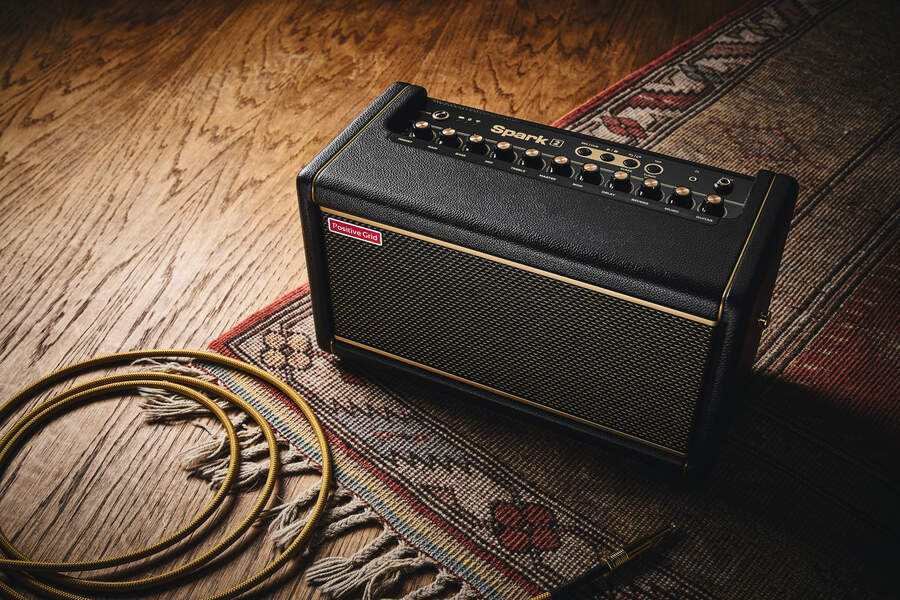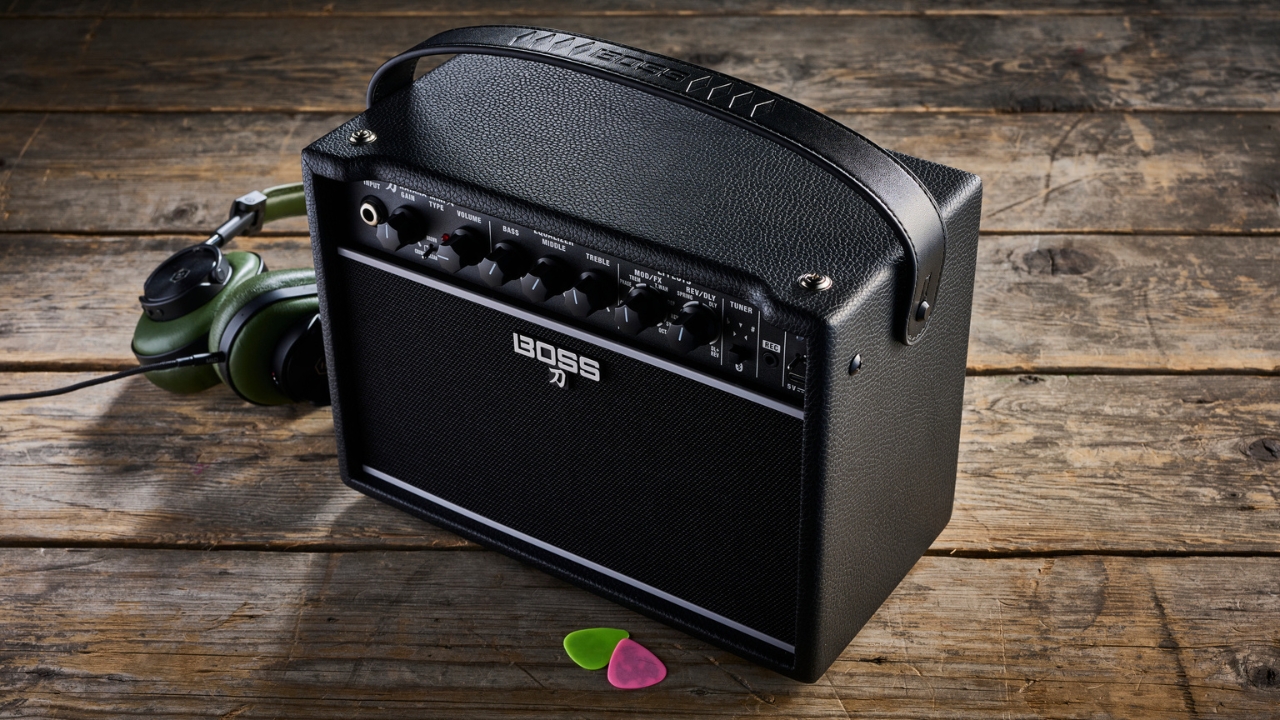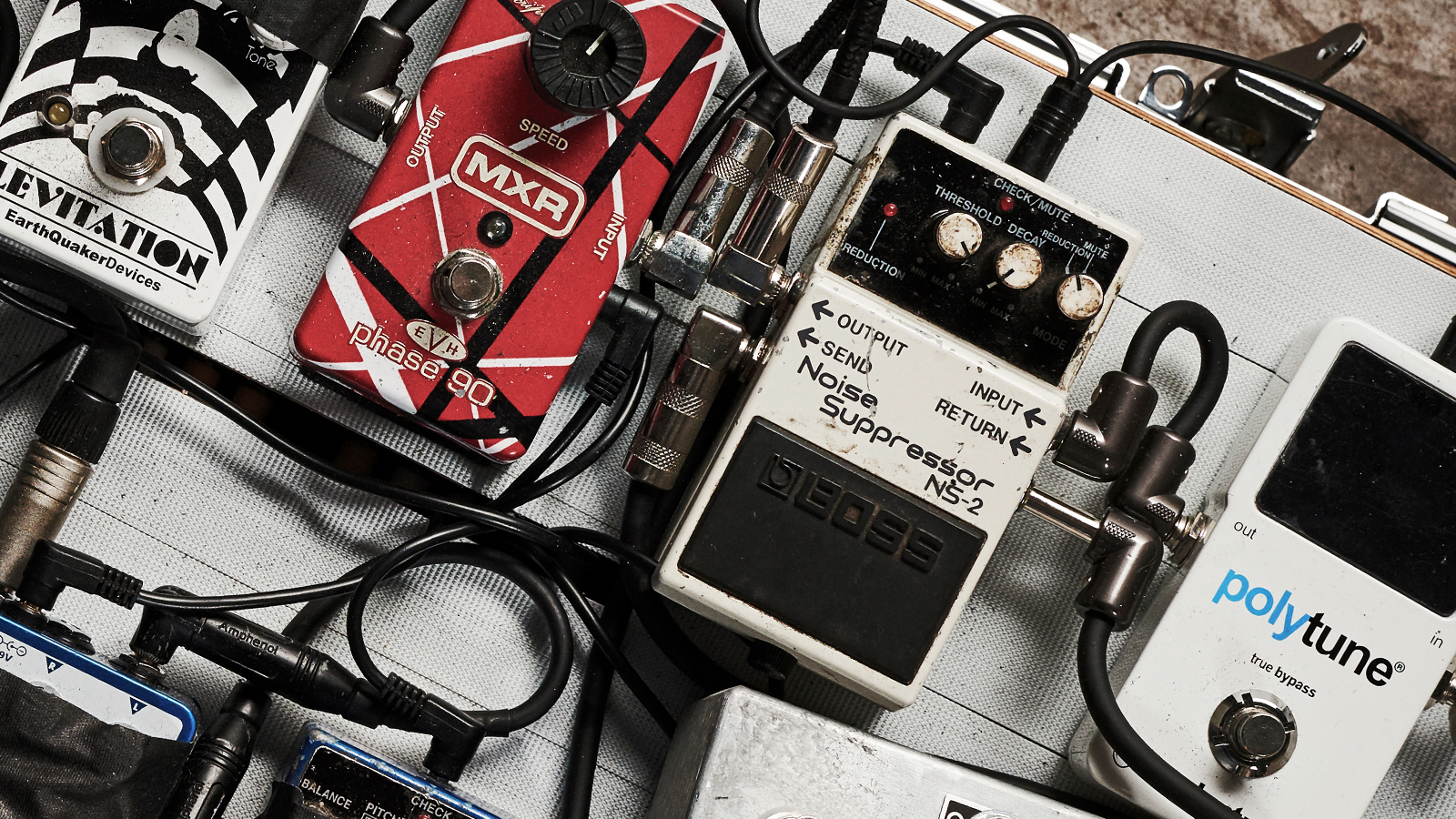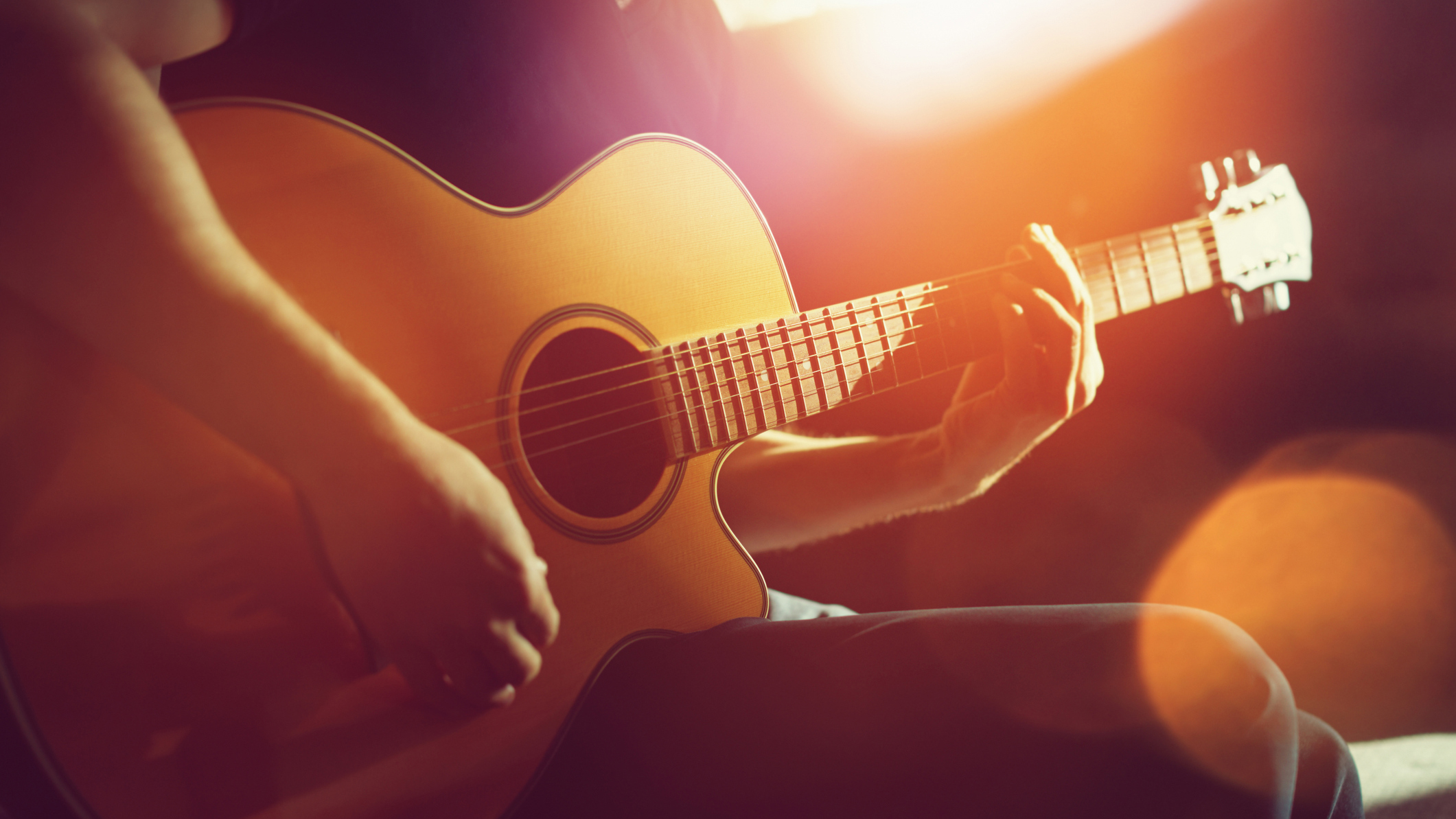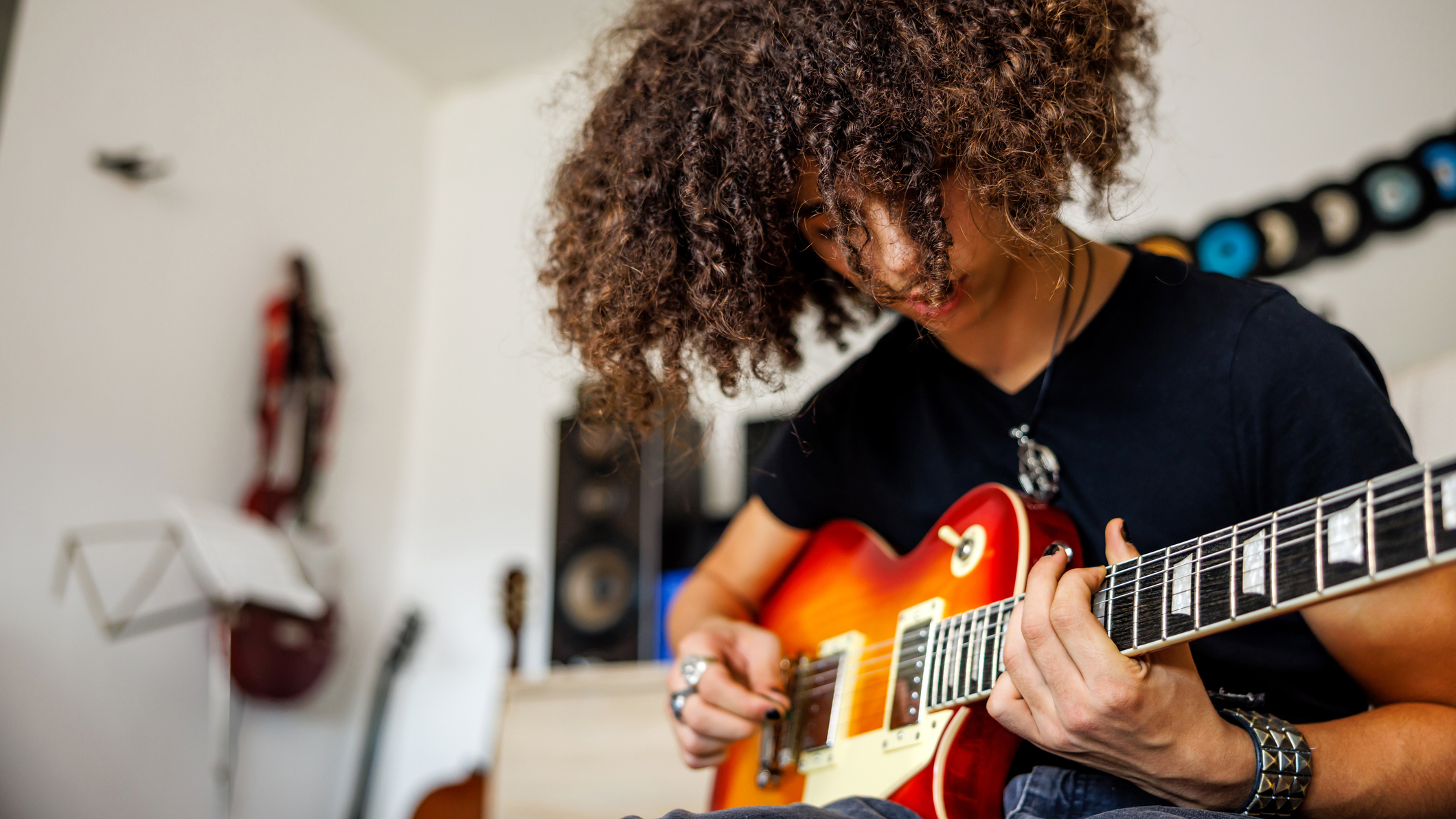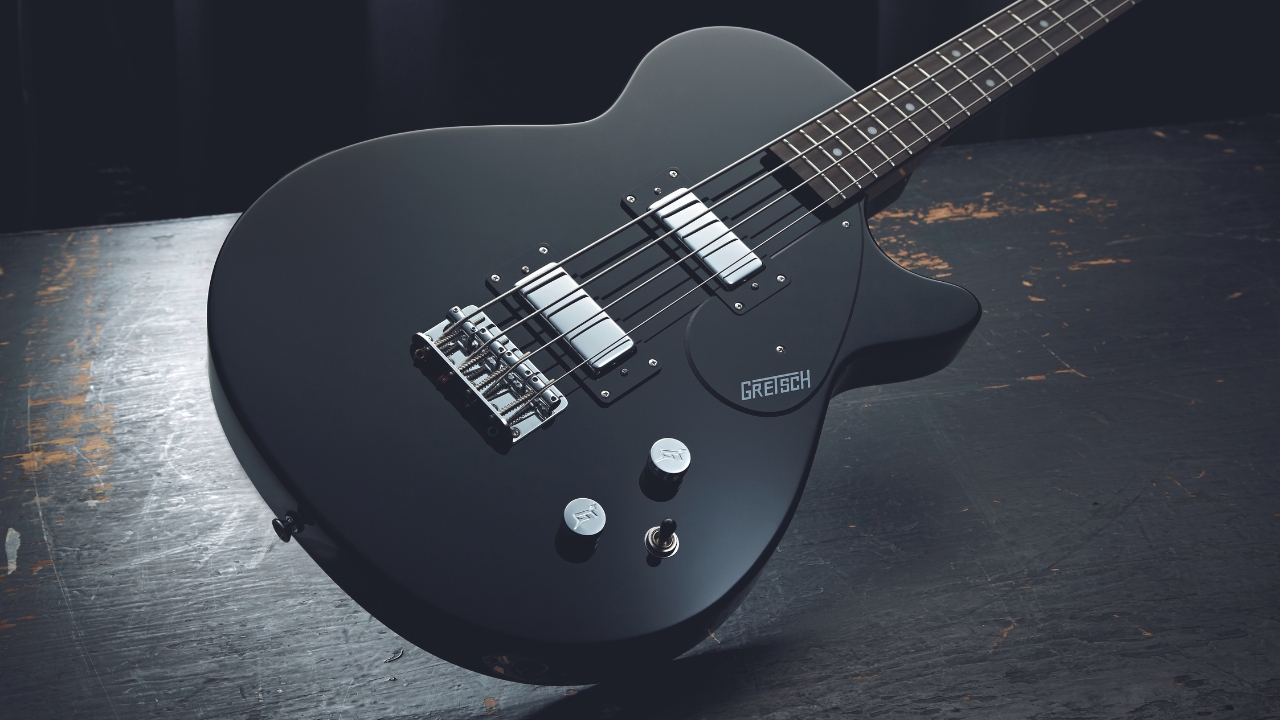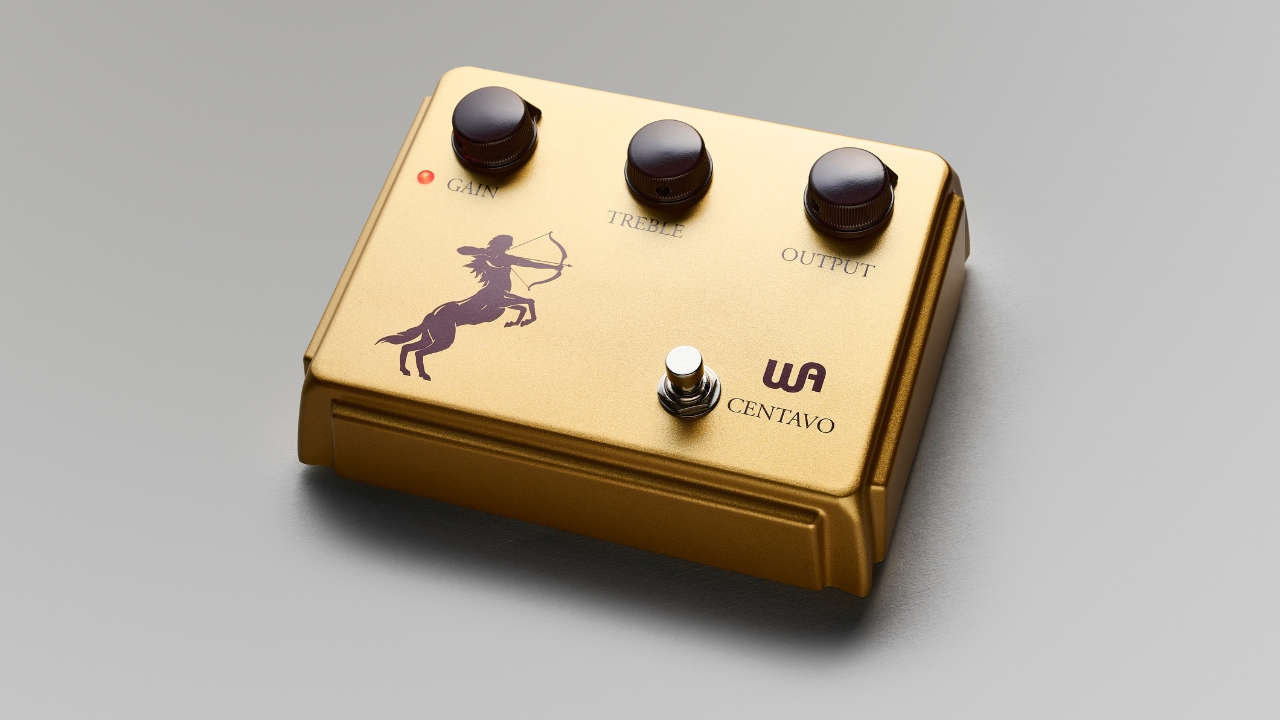Best headphone amps for guitar 2025: Crank your amp and silence your surroundings
Quiet practice has never sounded so good thanks to capable and affordable headphone amps from Boss, Fender, Vox and more
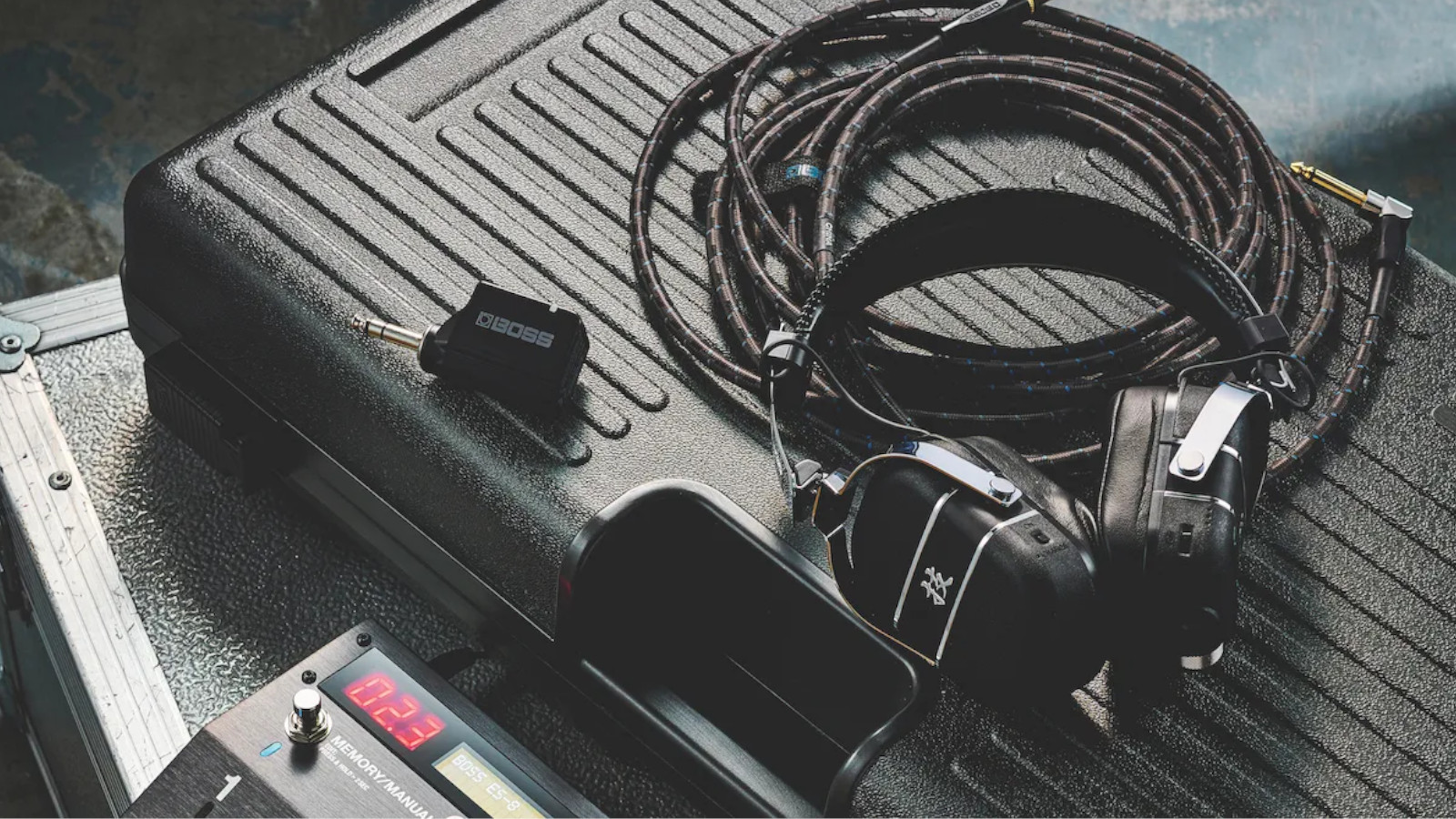
Guitar practice at home should be engaging and exciting, and the best way to achieve that is with brilliant guitar tones. However, that’s not always possible with an amplifier without disturbing your family and neighbors. It is possible to achieve great tones without noise complaints, though, with one of the best headphone amps for guitar.
A headphone amplifier is a device that produces amp tones through a headphone output, meaning you can simply throw on your favorite set of cans and get all the volume you could wish for directly to your ears morning, noon, or night, wherever you are. They are perfect practice partners and an ideal companion for both beginner guitarists and pros who are always on the move.
Headphone amps of the past may have been fairly rudimentary devices, offering one amp tone with some basic manipulation (EQ, drive), and these are perfect if you want a simple practice tool, even today, but some modern headphone amplifiers have far more features such as inbuilt effects, wireless connectivity, USB and recording outputs for studio or live gigs.
Whether you need the extra features or are simply looking for simple, great tones from a headphone amp, our list of the top picks on the market means you can be sure to get one of the best.
Our top picks
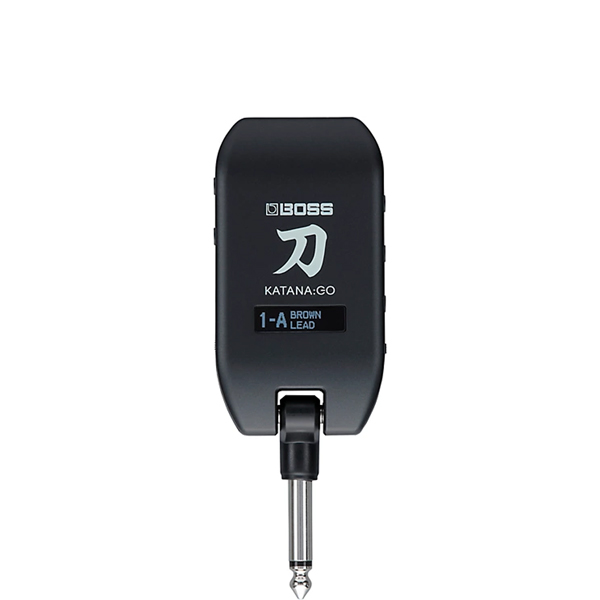
The Katana:GO is loaded with 10 different amp types and over 60 effects. Being a Boss product, you can bet the effects sound great, and with 30 memory banks you can save your favorite tone rigs at the drop of a hat. The Katana’s OLED display is bright and easy to navigate and the built-in tuner is incredibly responsive and reassuringly accurate. Bluetooth connectivity allows for jamming with backing tracks.
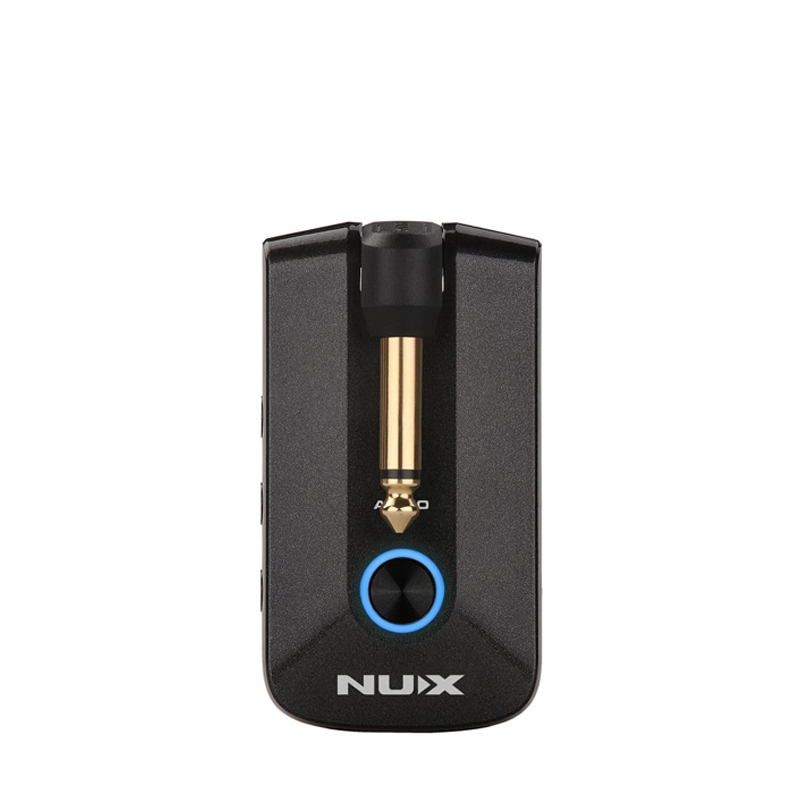
This little thing is a mighty plug indeed. Packed full of different amps, cabs and effects, you can dial up a wide range of sounds to suit any musical endeavor. Everything is controlled via an app on your phone or tablet, so if you prefer old fashioned knobs and buttons, then this might not be for you. The sounds are great, and you can tweak them a lot to suit personal taste.
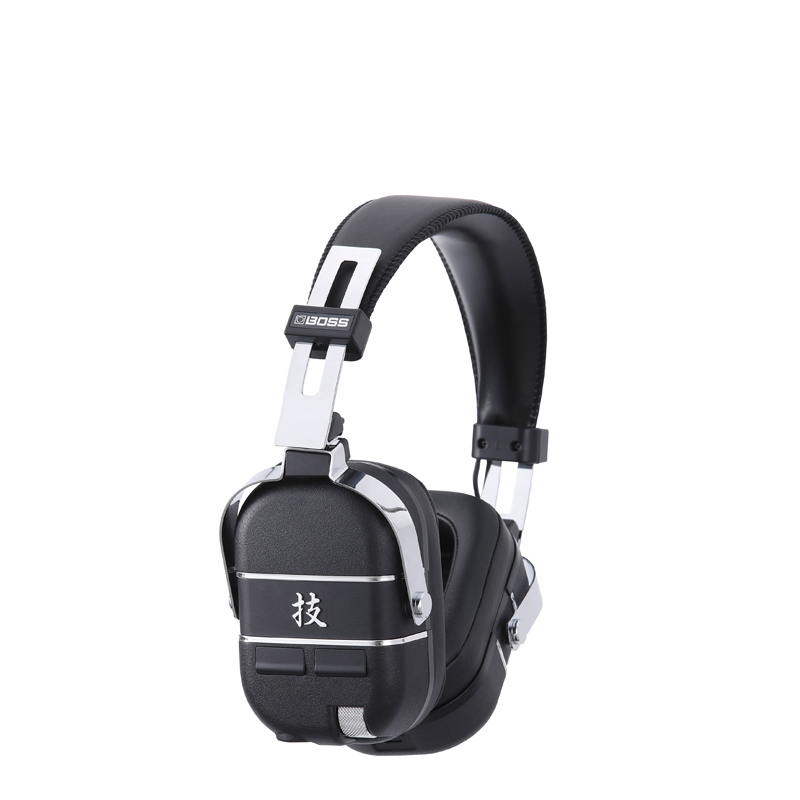
Using a wireless jack (included), the headphones connect directly and you control the sounds mostly via an app. Boss have managed to do some really special things with these headphones. It’s not a particularly direct sound – much more ‘in the room’, as it would be if you were playing a real amplifier driving full sized speakers. You can get a great range of tones, too. There’s a superb selection of clean, crunchy and distorted sounds, all of which are pretty convincing, like they are with the Katana range of amps.
Best headphone amp overall
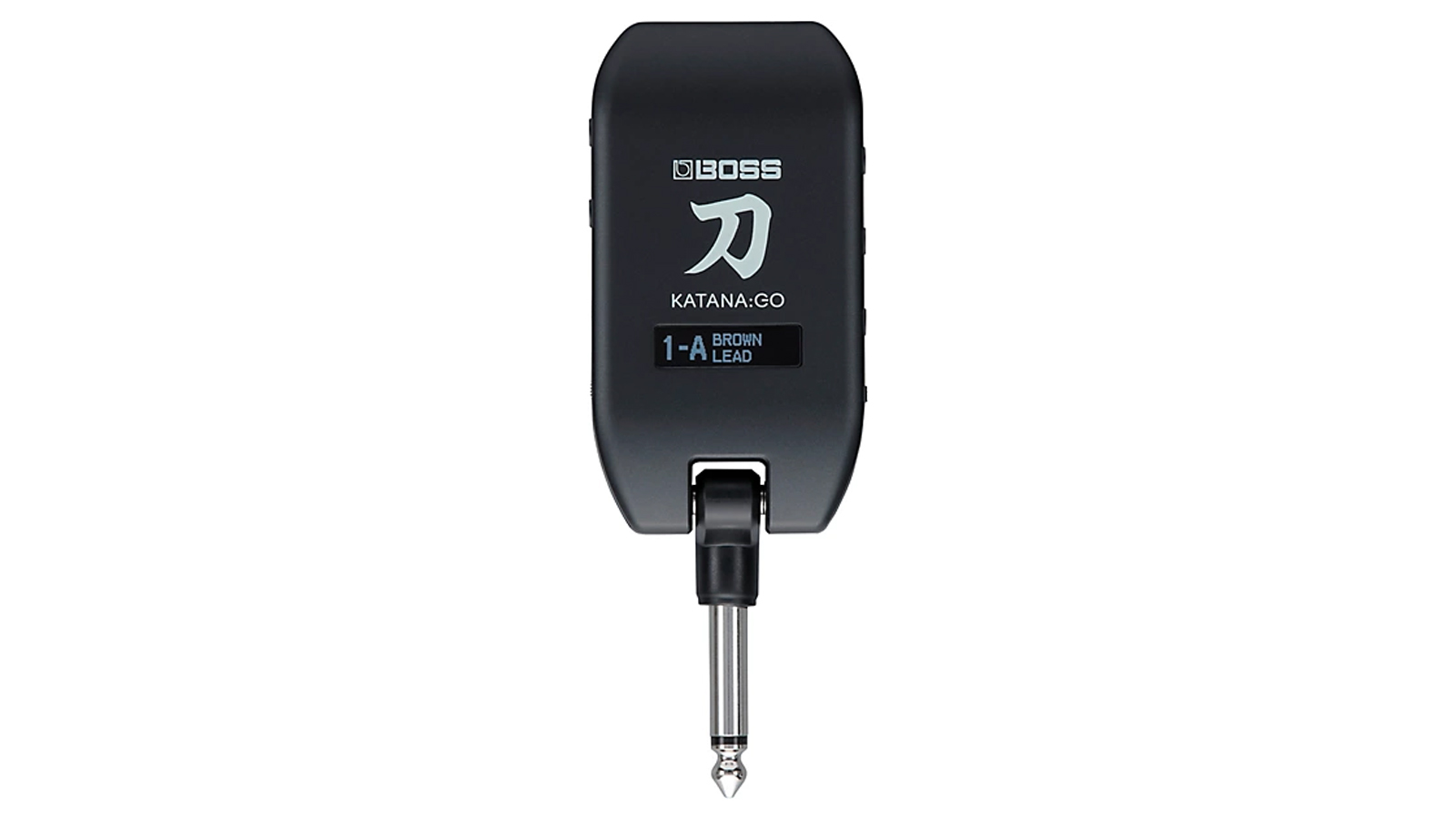
1. Boss Katana:GO
Our expert review:
Specifications
Reasons to buy
Reasons to avoid
Boss’s Katana range has become a modern classic, renowned as one of the best-selling practice amplifier lines on the market. When Boss released the headphone amp equivalent, the Katana:GO, it had big shoes to fill. After being abruptly pulled from production just months after the initial launch due to issues sourcing components, it’s back with a slight redesign, but it still sounds absolutely excellent.
Although more diminutive, the Katana:GO is loaded with 10 different amp types and over 60 effects. Being a Boss product, you can bet the effects sound great, and with 30 memory banks you can save your favorite tone rigs at the drop of a hat. The Katana’s OLED display is bright and easy to navigate and the built-in tuner is incredibly responsive and reassuringly accurate. Bluetooth connectivity allows for jamming with backing tracks and the USB-C connection turns this impressive little headphone amp into an audio interface.
However, the most satisfying feature is the ‘Stage Feel’. Picture it as three room sound presets – Stage, Studio, and Custom – delivering an immersive, almost binaural experience. Using the app opens up even more immersion; you can position your amp in front or behind you, adjusting its placement in the mix. The same goes for backing tracks, allowing you to feel like you're performing live with a band.
Best on a budget
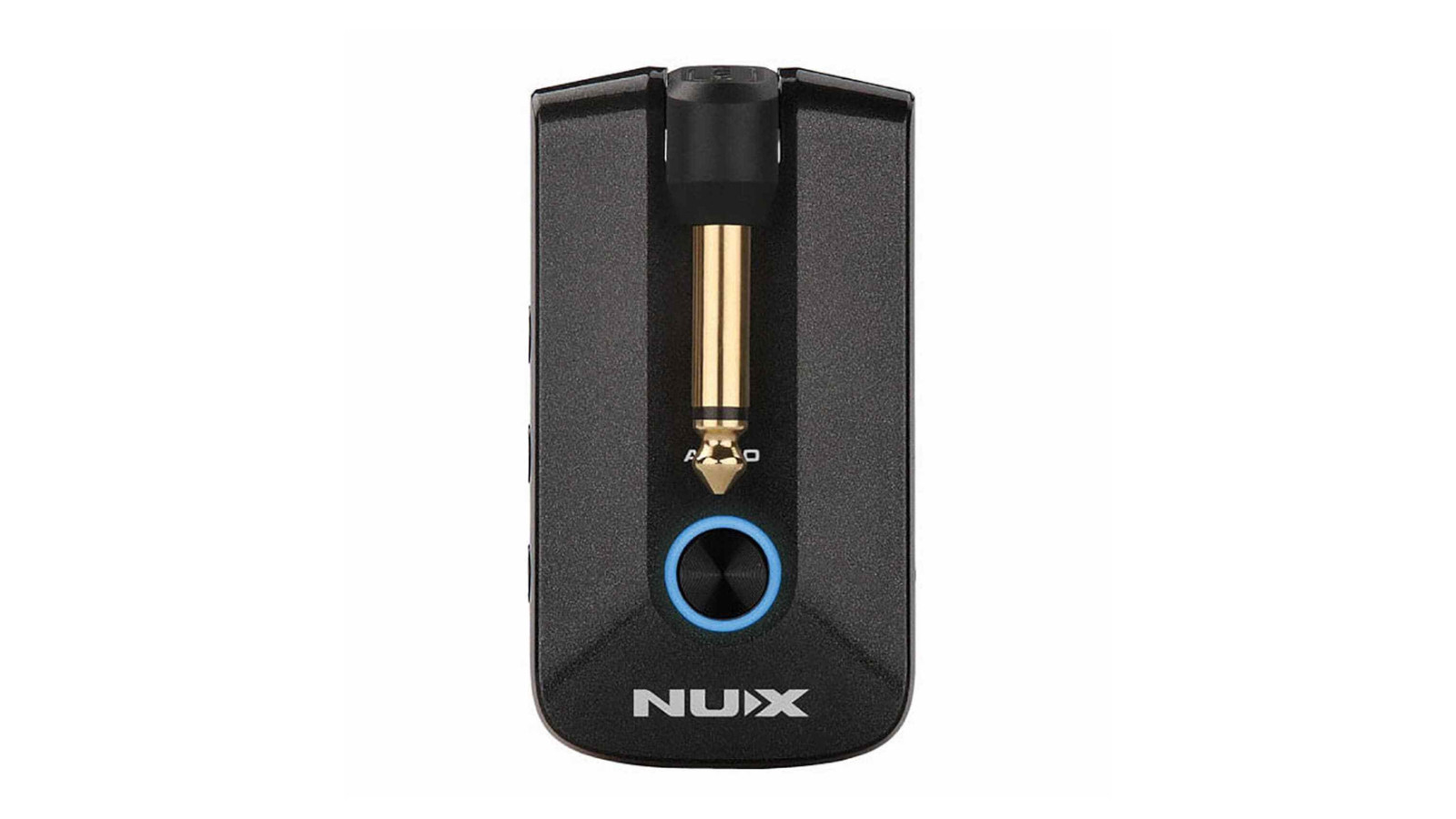
2. NUX MP-3 Mighty Plug Pro
Our expert review:
Specifications
Reasons to buy
Reasons to avoid
This little thing is a mighty plug indeed. Packed full of different amps, cabs and effects, you can dial up a wide range of sounds to suit any musical endeavor. Everything is controlled via an app on your phone or tablet, so if you prefer old-fashioned knobs and buttons, then this might not be for you.
The sounds are great, and you can tweak them a lot to suit your taste. You can save and dial-up patches, plus the colored light on the side of the unit reflects what patch you’re on, which is handy. There’s even an acoustic simulator on board so you can get acoustic guitar-like tones using your electric guitar, via headphones.
There’s a USB-C output which serves as a charging port and can also be used to record into a computer. Should you wish to go cable-free, the Mighty Plug Pro can stream to Bluetooth headphones too.
Best for pros
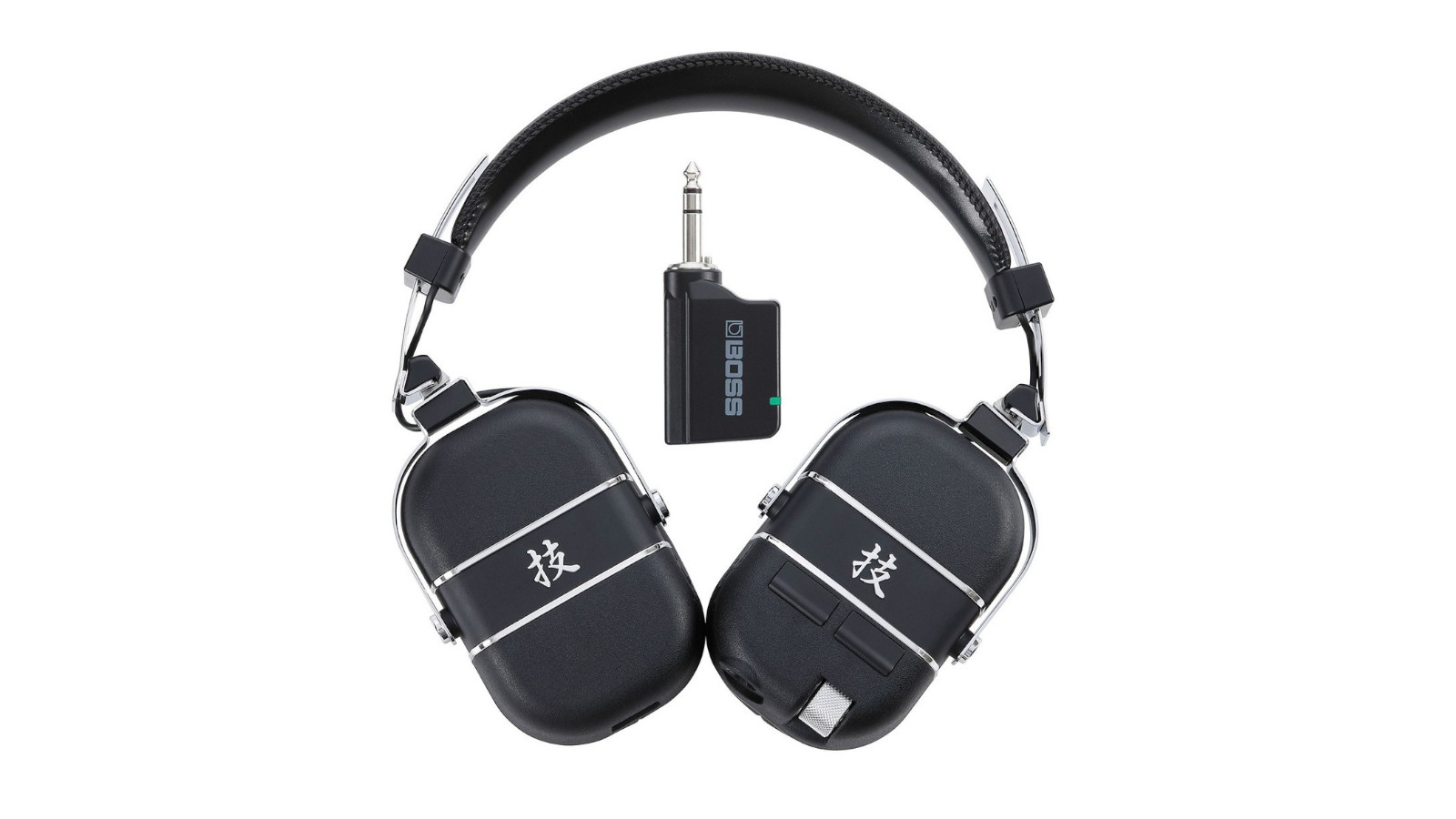
3. Boss Waza-Air
Our expert review:
Specifications
Reasons to buy
Reasons to avoid
Boss’s Waza Craft technology has made waves ever since it was introduced nearly 10 years ago. Touring and bedroom players alike have looked to the range for superb tone, classic Boss reliability and fantastic tweakability. The Boss Waza-Air headphones abide by all of this and more.
Using a wireless jack (included), the headphones connect directly and you control the sounds mostly via an app. Boss have managed to do some really special things with these headphones. It’s not a particularly direct sound – much more ‘in the room’, as it would be if you were playing a real amplifier driving full sized speakers. You can get a great range of tones, too. There’s a superb selection of clean, crunchy and distorted sounds, all of which are pretty convincing, like they are with the Katana range of amps.
The actual headphones themselves are comfortable and deliver a superb sound quality, and you can get up to five hours’ play time with the built-in rechargeable battery. You can also use them as regular headphones and stream your music via Bluetooth.
Best for clean tones
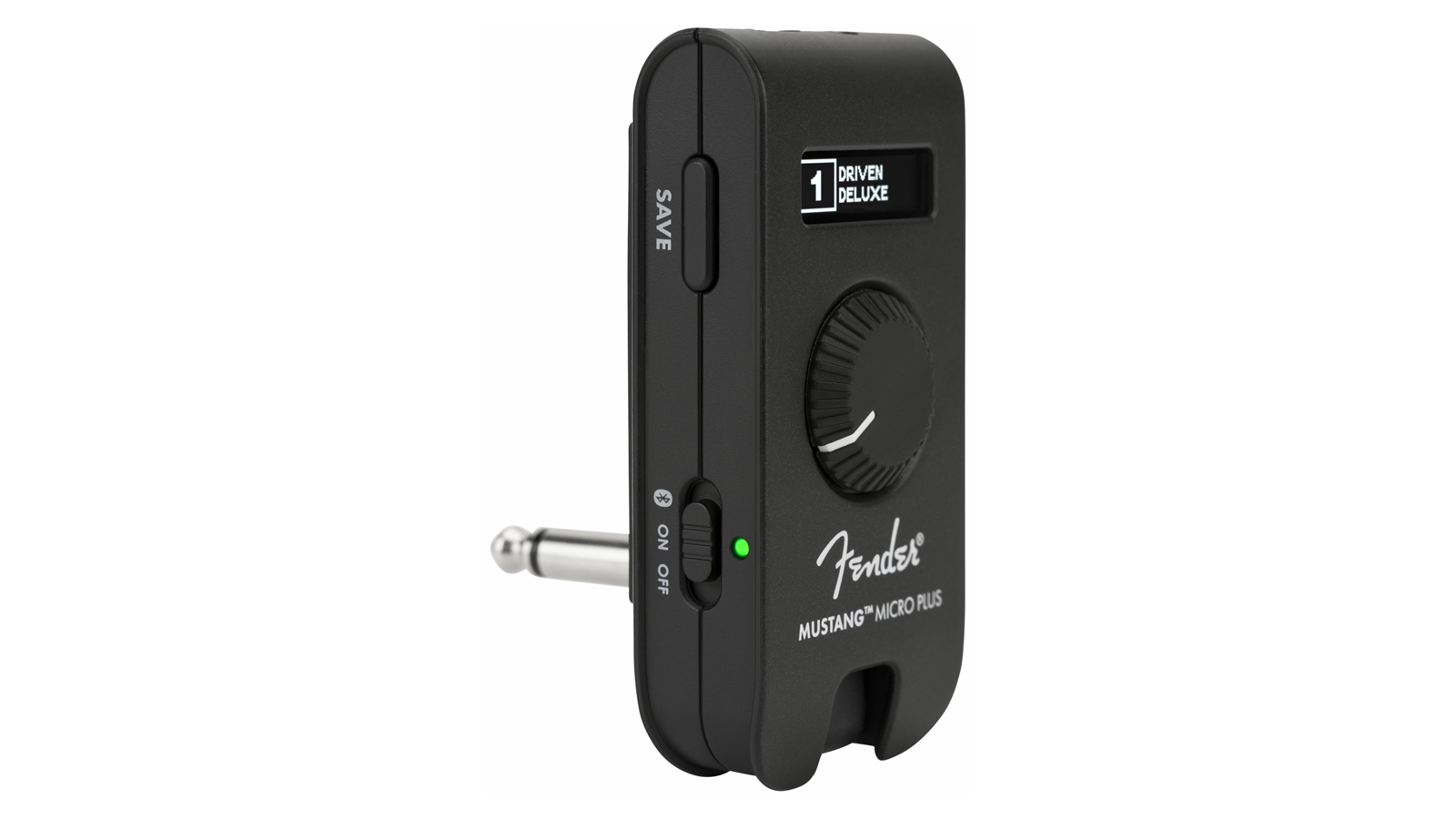
4. Fender Mustang Micro Plus
Our expert review:
Specifications
Reasons to buy
Reasons to avoid
The Fender Mustang Micro Plus is the pinnacle of its headphone amp range, sitting above the standard Mustang Micro. Notable improvements over its little brother include 25 different amps and effects, compared to the Mustang Micro’s 12, and a newly added save button to store patches on the go into one of its 100 dedicated preset slots.
Perhaps the simplest, but arguably best, upgrade on the standard Mustang Micro is turning the unit’s body around so that the writing is the correct way up when reading, while an added OLED screen makes navigating through amps and effects much easier on the fly, though you can get even deeper into editing your patches in the Fender Tone app.
An onboard tuner completes the Mustang Micro Plus, which is a simple but endlessly useful addition that makes it one of the best headphone amps out there and an extremely compelling option for beginners and touring pros alike.
Best for looks

5. Positive Grid Spark NEO
Our expert review:
Specifications
Reasons to buy
Reasons to avoid
The first headphone amplifier in Positive Grid’s ever-growing range, the Spark NEO is a brilliant option for anybody already loving the Spark ecosystem, though if you’re not a fan of having to use an app to operate your amp, we’d suggest you steer clear, as standalone editing on the NEO itself is very limited. For those on the fence, we’d strongly recommend giving it a go as the Spark App is generally very user-friendly and the NEO headphones are definitely worth your attention.
An area where Spark NEO really excels is the sheer options available, with 33 amp models and 43 effects ready to go plus the comprehensive editing features you can find across the rest of the spark range, you have virtually limitless tonal options. We’re not totally sold on AI in the world of guitar just yet, but with Spark AI, you can simply describe your ideal sound, and it will create a unique tone for you. A gimmick? Maybe. Cool? Absolutely.
A big benefit of the Spark NEO is that they work as standalone Bluetooth headphones too, and given how good they look, you’ll be more than happy to walk around with these on your head in public. With 8 hours of battery life for Bluetooth listening, they last for plenty of time too, though this is reduced to 6 hours when the amplifier is enabled.
Best pedal-style amp
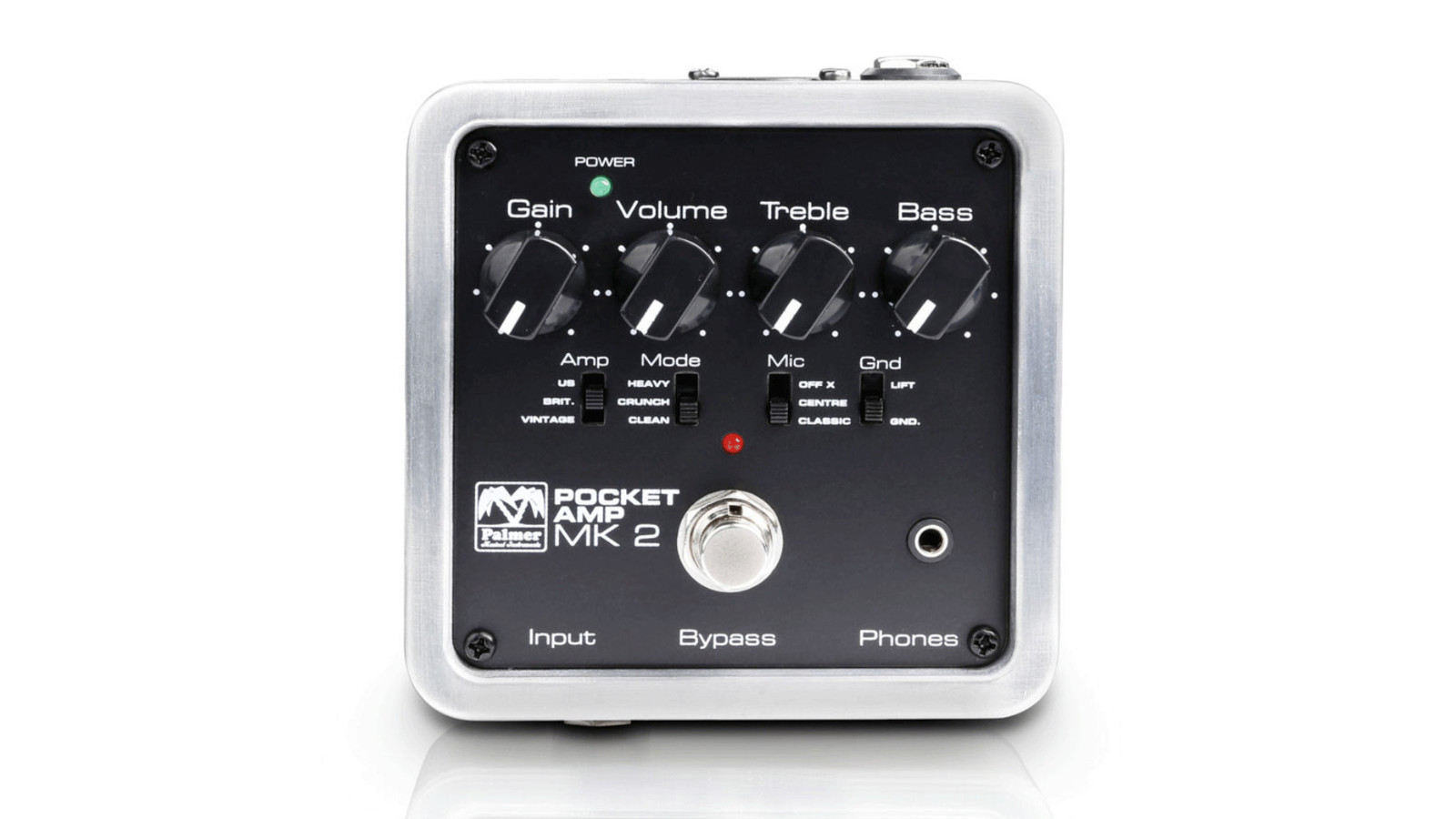
6. Palmer Pocket Amp PEPAMPMKII
Our expert review:
Specifications
Reasons to buy
Reasons to avoid
This is a good option for those that prefer something more tactile. There is no menu scrolling or digital displays. All sounds are chosen and tweaked using the switches and knobs – it’s all right there in front of you, like a pedal.
In fact, it pretty much is an amp in a pedal form. You plug your guitar into this, then you can take a pair of headphones out of it and play with a range of great tones without disturbing anyone else. There is also an XLR output too, allowing you to take a feed to a PA system or interface – this means it’s also handy to have for live and/or recording use.
The tones are fantastic too – you’ve got a selection of modes, vintage, Brit and US, each giving a different flavor of tone. You then pair any of these with a clean, crunch or heavy setting that gives you different levels of gain. You can get everything from clean tweed style amp tones to saturated metal high-gain stack sounds, making it suitable for any type of music. You even have a couple of options of virtual microphone placement, and a ground lift switch.
Best for video use
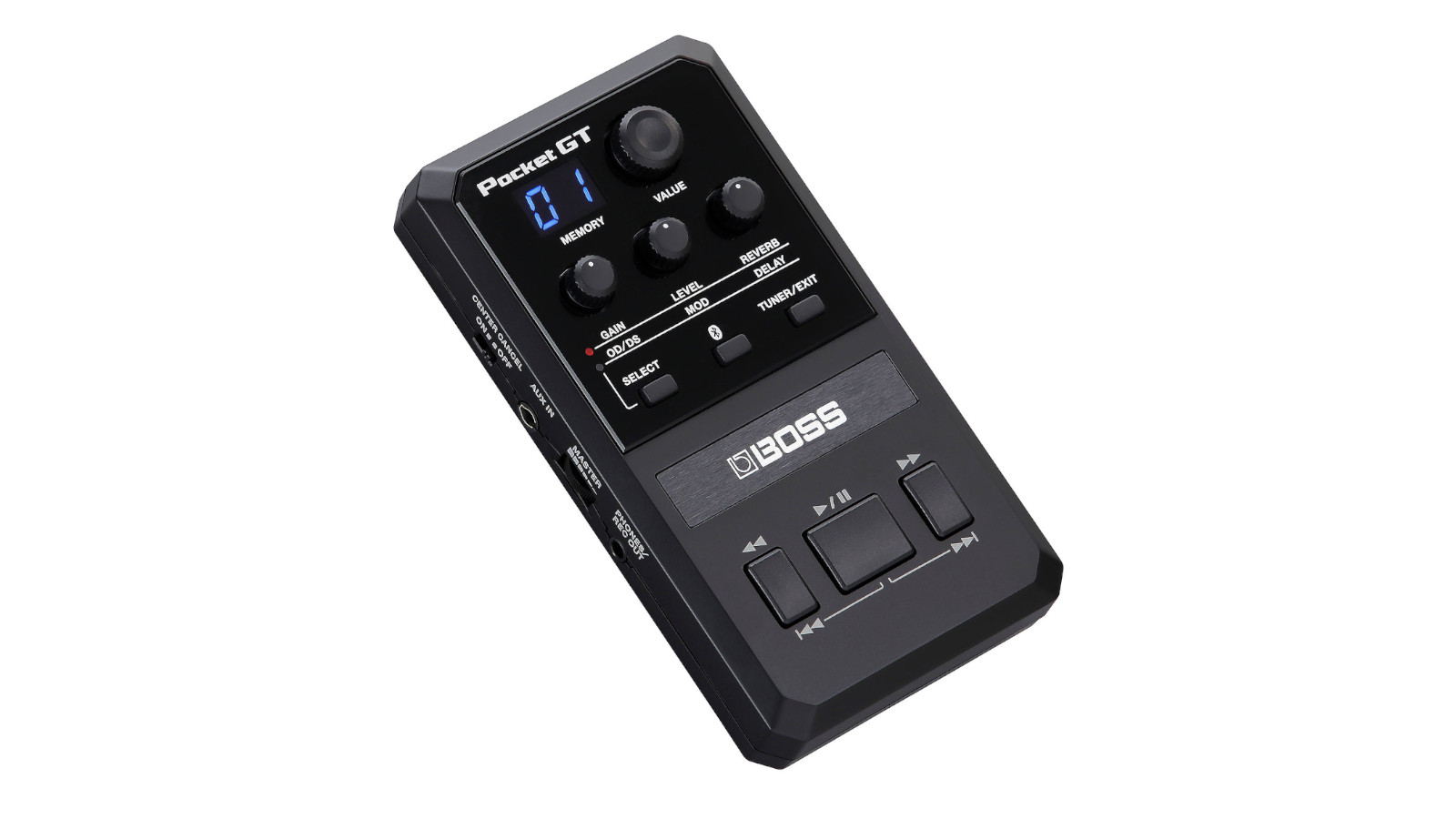
7. Boss Pocket GT
Our expert review:
Specifications
Reasons to buy
Reasons to avoid
This pocket sized device houses the Boss GT sound engine which has featured in some amazing multi-effects and modeling pedals over the past few years. You get over 100 different amps and effects, meaning you can craft any tone imaginable. The quality of sounds is exactly what you’d expect from Boss too; they’re excellent.
Where the Pocket GT really comes into its own is when you pair it with a smartphone or tablet. Firstly, you can unlock loads more parameters with which to tweak your sounds, and set up patches etc, but it’s here where you can use the device as a really powerful practice and learning tool. You can use the Boss app to watch YouTube videos, and even set up markers and loops, so if there’s one section of a video or song that you want to run through a few times, you can do that. You can use the controls on the Pocket GT to control it too, rather than scrolling through on your phone screen.
If you’re one for using videos to aid your playing or learning, then the Boss Pocket GT is probably the best headphone amp for you.
Best for classic rock

8. Vox amPlug 2 Brian May
Our expert review:
Specifications
Reasons to buy
Reasons to avoid
Whilst this pocket-sized tone machine from Vox might not pack the same punch as Brian’s nine AC30s all turned up, you can still get great in-headphones sound from the Brian May signature amPlug. It’s very similar to the incredibly popular AC30 model, only it’s a little more, well, Brian May.
Built into this nifty little unit are two types of delay (including one where you can harmonize with yourself), chorus and phaser. There are also essentially two channels – a regular AC channel, and then a treble boosted channel, for that signature Brian May sound. It does a great job of replicating that classic chimey, jangly sound on the AC channel and then the more pushed, gainy tones on the boosted channel.
There’s even a bunch of rhythms for you to play along to, making this a very useful piece of gear for practicing with, as well as being loads of fun.
Best for pedalboards
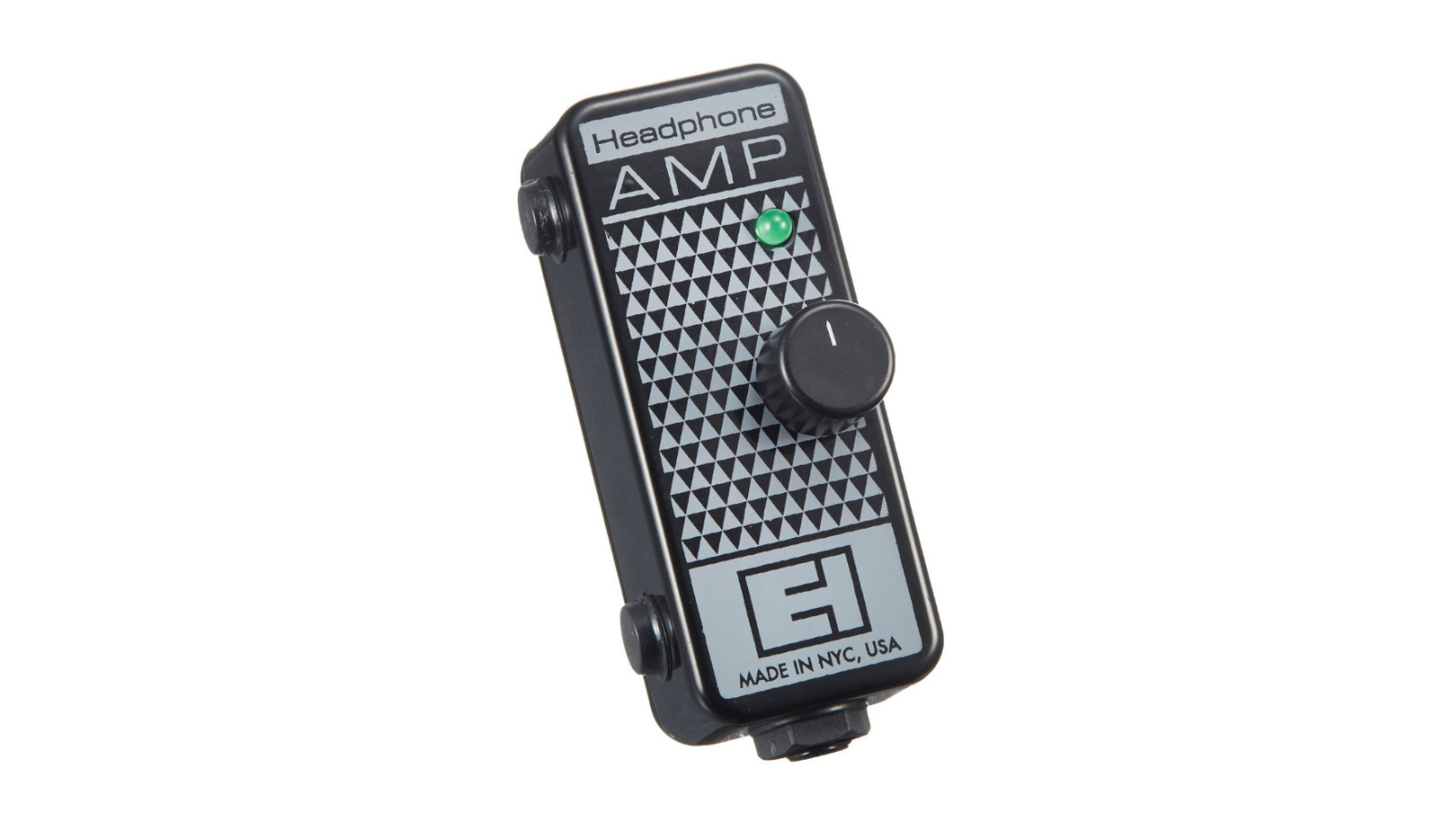
9. Electro-Harmonix Headphone Amp
Our expert review:
Specifications
Reasons to buy
Reasons to avoid
Here’s a fantastic option if you’re looking for a headphone amp to run your pedalboard through. The Electro-Harmonix Headphone Amp does away with any additional features and provides you with a simple, easy to use amp that can act perfectly as a blank canvas for your carefully curated selection of effects pedals.
It’s powered with a regular 9v connection, so you can keep this on your board if it’s something you think you’ll use often. Simply put this at the end of your chain, as if you were running into the front of an amp, and take the headphones out of there, and away you go.
Best for high gain
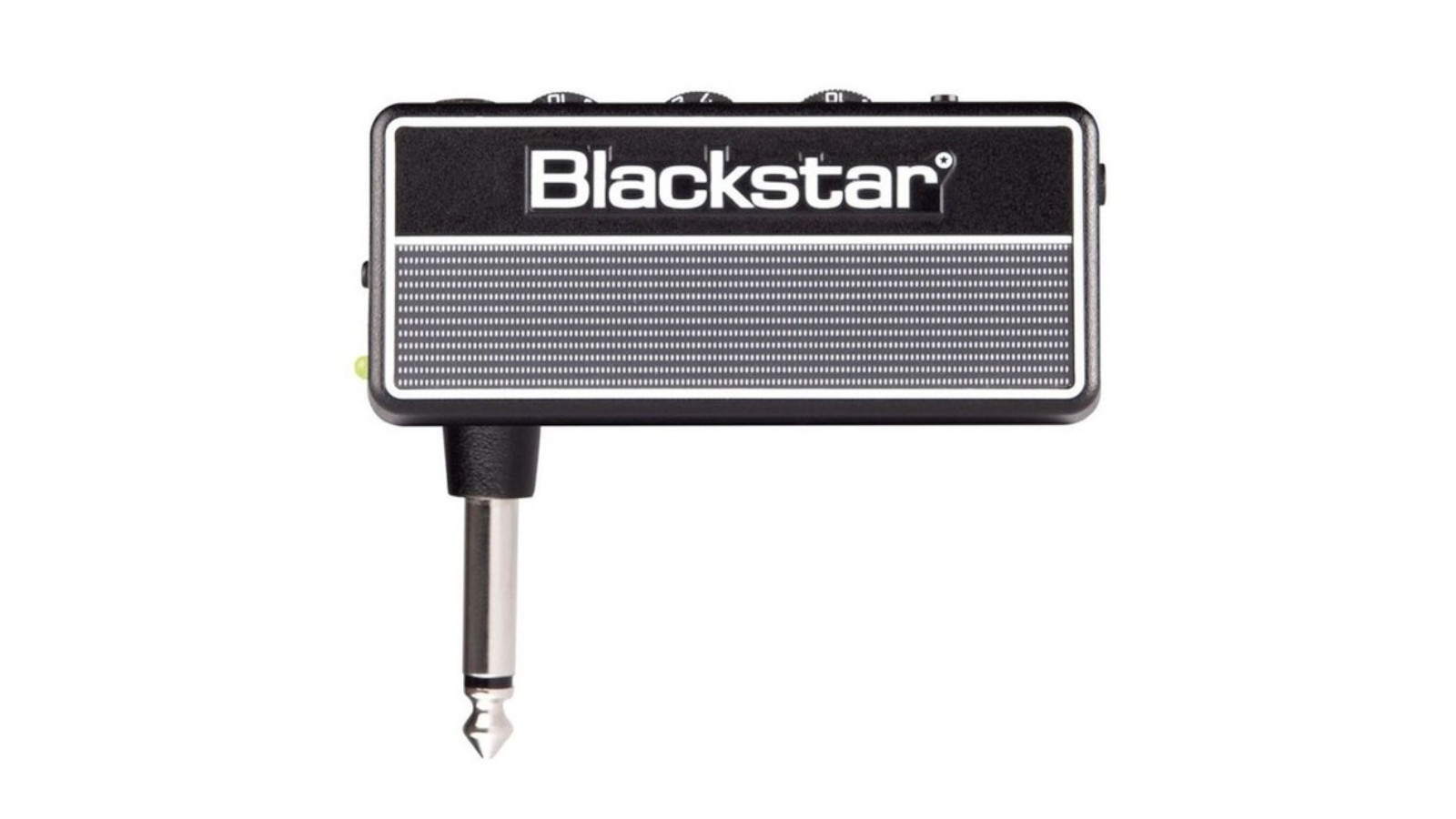
10. Blackstar amPlug 2 FLY
Our expert review:
Specifications
Reasons to buy
Reasons to avoid
As you might guess by the design and name, this is very similar to Vox’s amPlug range, except it’s loaded with classic Blackstar tones. That is to say it’s super versatile and can cater for any playing style. The design sports the tried and tested built-in jack plug, so all you need to do is plug it into your guitar, insert some headphones, and you’re ready to go.
This has three channels, clean, crunch and lead, as well as chorus, delay and reverb that can be used on any channel. It’s also got Blackstar’s patented ISF control, which lets you sweep the midrange for either a more British or American style voicing. All of these features combine to allow you to be able to dial in pretty much any sort of tone, from country to heavy metal. Some of the settings even add a touch of tube style compression resulting in a very, very good playing experience.
Best for effects

11. Line 6 Pod Express
Our expert review:
Specifications
Reasons to buy
Reasons to avoid
Calling the Line 6 Pod Express a headphone amp perhaps undersells its power, because this could easily replace your full pedalboard with its bank of effects options derived from the award-winning Helix range. Out of the box, the Pod Express features 7 amps, 7 cabs and 17 effects, including a looper, which are super simple to operate, but download the POD Express Edit app and you can dive into a new realm of tweakability.
Alongside the headphone output, the Pod Express also features stereo outputs which would be ideal for recording if you have a particularly nice preamp set-up. If you don’t then you needn’t worry as it also features a built-in USB C interface, making it an ideal partner for any guitarist looking to get into recording at home.
Its downside is that it isn’t quite as mobile as some other headphone amps if you want to play on the move, and a rechargeable battery instead of AAs would be preferable, but it is still a great option for a headphone amp if you typically play sat down.
Best throwback

12. Rockman Guitar Ace
Our expert review:
Specifications
Reasons to buy
Reasons to avoid
The Rockman is one of the most revered headphone amplifiers ever made, first released in 1982 by Scholz Research & Development, Inc. and has become legendary for encapsulating the sound of ’80s guitar. The original Rockman X100 units are cult classics and retail for hundreds of dollars, but thankfully MXR has revived the brand and produced the Guitar Ace, a unit with remarkably similar, classic ’80s tones.
With a simple selection of controls including clean/distortion switch, semi/heavy distortion switch for when that mode is engaged, and finally a volume knob, this is probably the most straightforward headphone amp in the world to operate. Simply add a 9V battery, plug in your guitar, headphones, and clip the belt clip on and you are away.
The Rockman has had a real resurgence in recent times, with parent company Jim Dunlop releasing a Rockman pedal to add the classic tones into your signal chain and guitar maestro Mk.gee releasing a song of the same name that channels those vintage tones. All that aside, it is worth saying that you are very limited with the tones that the Rockman Guitar Ace can produce. If you love ’80s guitar, though, it could be a must-have.
FAQs
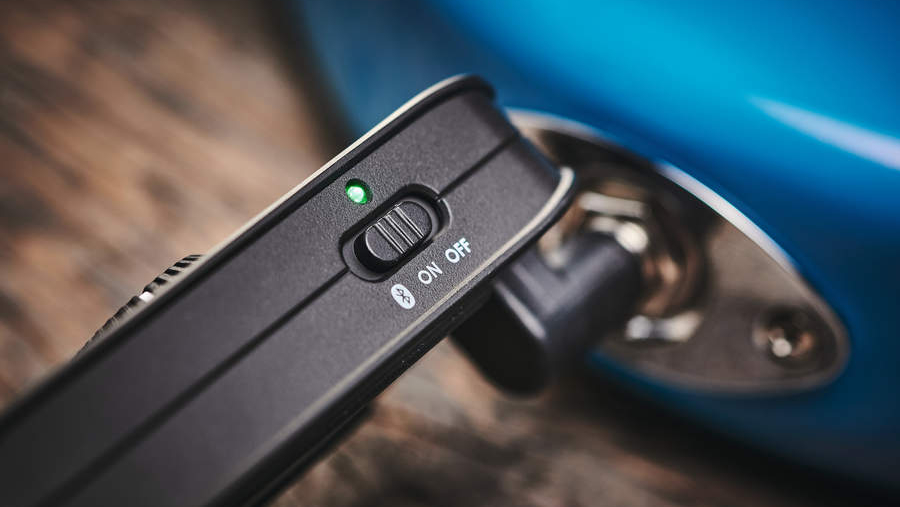
What tones can I expect?
You can trust Guitar Player.
Our pick of the best headphone amps for guitar cover a wide range of bases. Some are modeling amps with loads of different tones built in, whereas some might be more basic, and have a more limited range of sounds. What’s right for you is completely personal of course.
Modeling amps will generally give you all sorts of clean, crunchy and distorted tones, along with some effects. There are even some headphone amps that give you the option of modeling different speaker cabinets. This gives you a huge scope for crafting your ideal sound, and they are great for those serious about using this as a silent practice tool. It does however mean that there are more options to scroll through, or dial in – or you might even have to use your phone or tablet to control it, depending on the model.
More straightforward units might be more limited in terms of the range of tones you can get out of them, but quite often, they’re easier to use. Old fashioned knobs and buttons control your EQ, volume and gain. Whilst you might not have various different modeled combos and stacks to browse through, you can get some fantastic sounds by using your ears and dialing it in.
Can I record with a headphone amp?
Many of the best headphone amps – and particularly those that sit towards the top end of the market in terms of price – will have dedicated recording outputs that make it simple to plug straight into your recording device or via USB. With amp simulation an option on some units, there’s no reason you can’t record excellent tones with just a headphone amp, rather than needing a conventional amp, microphone, and more.
Do headphone amps offer a universal fit with every guitar shape?
In general, you should be fine with any headphone amp fitting your guitar, with many having built in jack outputs that plug directly into the guitar. Depending on the position of the jack output of you guitar, this may not be the most comfortable and in some situations, it may not quite fit – for example, if you have a barrel jack output recessed into the body – if this is the case, you may be better off with a standalone unit that is connected by an additional jack cable. Standalone units are ideal if you want to mount to your pedalboard, and some will come with belt clips so you can remain mobile.
What do I need to know about headphone amp connectivity?
As a bare minimum, every headphone amp will have a headphone output, but for some, this will be the limit. Other more modern headphone amplifiers, such as the Fender Mustang Micro Plus, are Bluetooth compatible, allowing you to stream backing tracks or your favorite songs through your headphones to jam along to, which makes them perfect for practice. Many more affordable or older headphone amps might lack Bluetooth, but you may be able to hardwire a device playing a backing track via an auxiliary cable.
How we select products
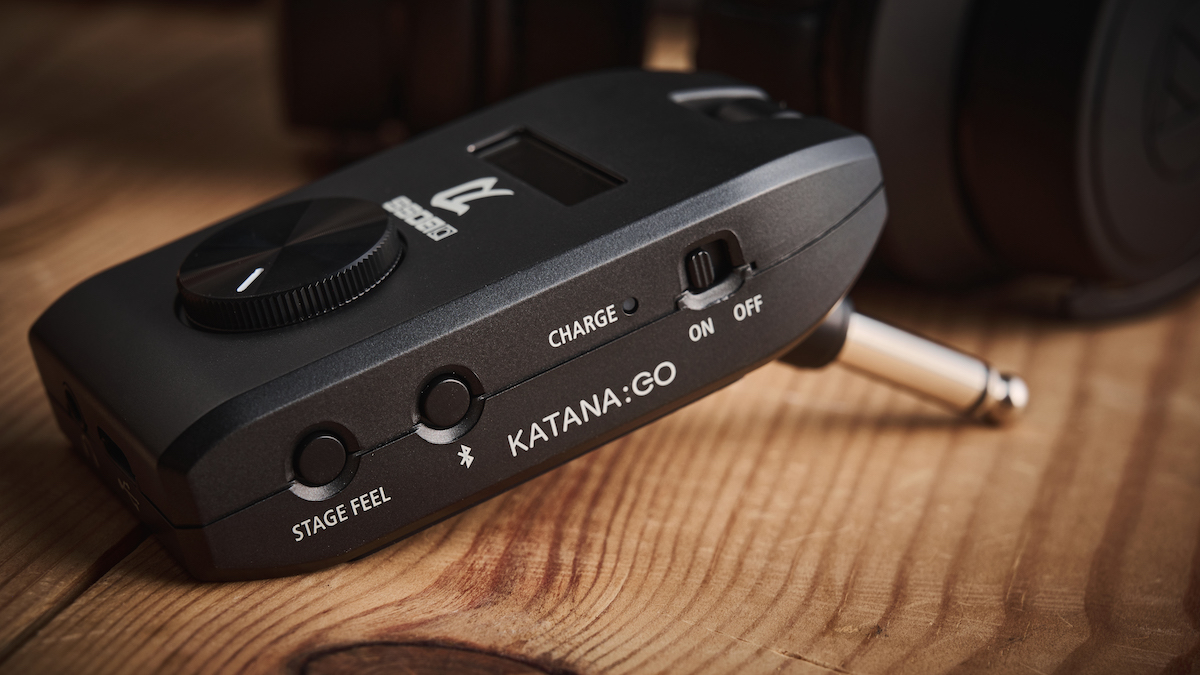
At Guitar Player, our team of writers aren't just music enthusiasts; we're real-life musicians. Our hands-on experience with acoustic guitar amps ensures that our reviews and recommendations are backed by practical knowledge and real-world testing.
When it comes to selecting the best headphone amps, we leave no stone unturned. Meticulously evaluating factors like tonal versatility, sonic character, build quality, and value for money, it's only after rigorous testing in a variety of playing scenarios do we choose products for our guides. We stand by our selections, ensuring that every amp we recommend is one we'd use ourselves.
Get The Pick Newsletter
All the latest guitar news, interviews, lessons, reviews, deals and more, direct to your inbox!
After spending a decade in music retail, I’m now a freelance writer for Guitar Player, Guitar World, MusicRadar and Reverb, specializing in electric and acoustic guitars bass, and almost anything else you can make a tune with. When my head’s not buried in the best of modern and vintage gear, I run a small company helping musicians with songwriting, production and performance, and I play bass in an alt-rock band.
“Write for five minutes a day. I mean, who can’t manage that?” Mike Stern's top five guitar tips include one simple fix to help you develop your personal guitar style
"It’s like you’re making a statement. And you never know where it’ll lead." Pete Thorn shares the tip that convinced Joe Satriani he was the right guitarist for the SatchVai Band

